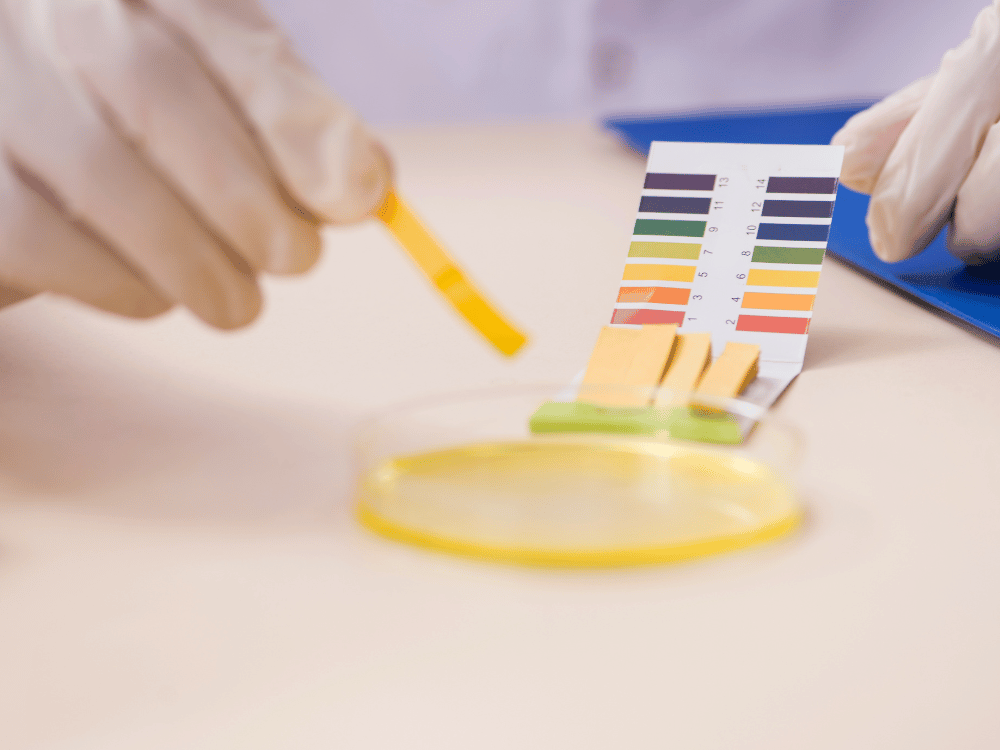Our bodies are amazing biological machines, constantly performing a vast array of complex functions to keep us alive and well. One of these is the delicate balance between acidity and alkalinity in our body fluids. Acidity refers to the acid content in these fluids, while alkalinity indicates the capacity to neutralize that acid.

pH: The Key to Body Acidity and Alkalinity
To understand this delicate balance, we must familiarize ourselves with a term called pH, an abbreviation for "potential hydrogen". The pH of our bodies is a measure of the hydrogen-ion concentration in our body fluids.
The pH scale of the human body ranges from 0 to 14. Higher pH levels indicate body fluids are more oxygen-rich and alkaline, while lower pH levels suggest less oxygenation and increased acidity. A pH of 7.0 is neutral.
To maintain a healthy state, our body fluid pH levels must fall within the following range:
- Blood pH: 7.35-7.45
- Urine pH: 4.6-8.0
- Saliva pH: 7.0-7.5
If pH levels drop below the stipulated range for each fluid type, it signals that the body is not efficiently expelling acid, indicating excessive acidity. However, many people fail to recognize this as they're unaware of acidity symptoms.

Acidosis
Acidosis is a medical condition characterized by excessive acid accumulation in the body fluids. It occurs when the body's pH level drops below the normal range (7.35 to 7.45), making the body more acidic.
Acidosis can be classified into two main types:
Respiratory Acidosis: This type of acidosis occurs when carbon dioxide (CO2) levels increase in the blood due to inadequate removal by the lungs. It can be caused by conditions like chronic obstructive pulmonary disease (COPD), pneumonia, or respiratory muscle weakness.
Metabolic Acidosis: Metabolic acidosis happens when the body produces too much acid or cannot effectively get rid of acids. It can be caused by conditions like uncontrolled diabetes (diabetic ketoacidosis), kidney failure, lactic acidosis, or ingestion of certain toxic substances.
There are some signs and symptoms to look out for:
- Fatigue or Weakness: Feeling weak or tired more often than not could be a sign of acidosis.
- Shortness of Breath: If you're having difficulty catching your breath, it could be a symptom of respiratory acidosis.
- Rapid Breathing: Breathing faster than normal can also indicate acidosis.
- Confusion or Lethargy: You may experience difficulty concentrating, confusion, or feel lethargic.
- Headache: Recurring or persistent headaches could be a symptom of acidosis.
- Sleepiness: You may feel more tired than usual or have difficulty staying awake.
- Lack of appetite: If you're experiencing loss of appetite, acidosis could be the cause.
- Nausea or Vomiting: Frequent nausea or vomiting is another potential symptom.
Acid-Overloaded System
The term "acid-overloaded system" refers to a situation where the body is saturated by excessive amounts of acids, leading to potential disruptions in normal physiological processes. This overload of acids might occur due to various factors such as:
Accumulation of acidic waste products: Some medical conditions, like kidney failure or certain metabolic disorders, can result in the buildup of acidic waste products in the body, overwhelming the body's natural buffering systems.
Excessive acid production: Certain diseases or conditions may lead to increased acid production in the body, contributing to an acidic environment.
Acidic substances or toxins: Ingestion or exposure to acidic substances or toxins can also overload the body's ability to neutralize and eliminate acids.
the food you eat can significantly influence the pH balance, or the level of acidity or alkalinity, in your body. consuming too many "acid-forming" foods (like meat, dairy, and processed foods) can lead to an overly acidic condition in your body, supposedly causing various health issues.
According to researchers symptoms might include:
- Fatigue or lack of energy
- Frequent headaches
- Muscle and joint pain
- Poor digestion or other gastrointestinal problems
- Skin problems, such as dry skin or acne
- Weight gain or difficulty losing weight
Acidosis vs. Acid-Overloaded System
While acidosis refers to a specific medical condition where pH decreases sustained due to excessive acid accumulation,
Acidosis is a sign of an underlying health problem that needs to be addressed. such as osteoporosis and kidney stones.
Acid-overloaded system is a broad term that includes various factors contributing to increased acidity including a diet high in acidic foods, chronic stress, and lack of physical activity.
It describes any situation where the body faces an excessive amount of acid that disrupts its normal functioning.

Restoring Alkalinity: How to Lower Body Acidity
Here's how to naturally reduce acidity and restore alkaline balance:
Stay hydrated
Water plays a vital role in keeping excess acid moving through your system and eliminating it.
Kick-start Your Day with Lemon Water
Lemon juice turns alkaline inside the body, raising pH levels.
Incorporate leafy greens into Your Diet
Alkalizing green vegetables such as kale, broccoli, cucumbers, spinach, and lettuce can help maintain a healthy pH balance.
Avoid highly acidic products
Consumption of caffeine, alcohol, soft drinks, processed foods, and artificial sugars exacerbate acidity.
Ensure adequate calcium and magnesium intake
Minerals are crucial for maintaining healthy bones, teeth, muscles, the nervous system, and the heart. They also maintain alkalinity.
Opt for organic foods.
Steer clear of genetically modified foods, as they often contain chemicals that aggravate acidity.
Use a mineral rich Alkaline water filter
A study published in the Journal of the International Society of Sports Nutrition reported that high-pH water can enhance hydration status and reduce cardiovascular strain during high-intensity workouts.
Mineralized water comes enriched with minerals like calcium, potassium, and magnesium. it provides your body with vital minerals.
Visit Life Sciences Water. Make your choice today and take charge of your health with Alkaline Mineral Water!
Conclusion
Maintaining a healthy acid-base equilibrium is essential for overall well-being. Understanding the difference between acidosis and an acid-overloaded system empowers individuals to take charge of their health. By adopting proactive measures, making dietary adjustments, and seeking professional advice when necessary, one can strive to achieve and maintain optimal pH levels.
To learn more: Visit link for a refreshing, healthy way to meet your hydration needs.

